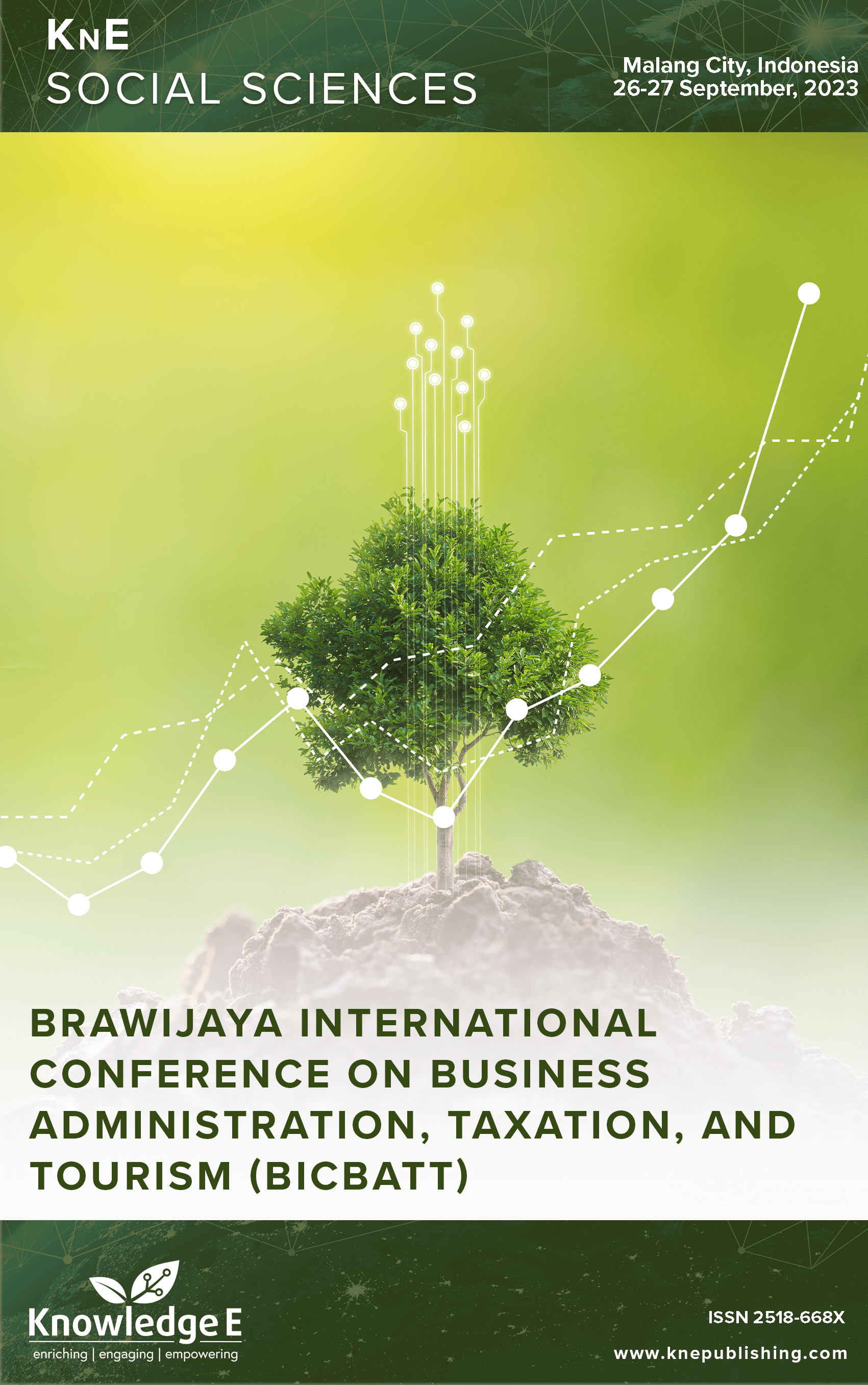Adoption of Human Resource Information Systems
DOI:
https://doi.org/10.18502/kss.v9i11.15763Abstract
This research investigated the critical factors influencing the successful adoption of E-HRM systems. Leveraging an updated DeLone and McLean IS Success Model, the impact of system quality, information quality, and service quality on system usage and user satisfaction were explored, ultimately linking these factors to E-HRM adoption success. A quantitative approach was employed, with data collected through a meticulously designed survey distributed to employees. Structural equation modeling (SEM) facilitated a rigorous analysis of the relationships between variables, while descriptive statistics painted a clear picture of the data landscape. SmartPLS 4.0 served as a robust tool for data analysis. The findings revealed a compelling narrative. Six of the nine hypotheses achieved significance, highlighting the direct and indirect influences of system quality, information quality, and service quality on system usage and user satisfaction. Notably, system usage emerged as a vital mediating variable, bridging the gap between system attributes and successful adoption. This underscores the pivotal role of encouraging user engagement and positive system experiences. Furthermore, the analysis unveiled a fascinating interconnectedness among all six variables. Each element, like a meticulously interwoven thread, contributes to the tapestry of successful E-HRM adoption. This interplay emphasizes the importance of a holistic approach, where no single factor reigns supreme but rather a harmonious synergy propels the system toward success. In conclusion, this study offers valuable insights for optimizing E-HRM implementation. High-quality systems with accurate and user-centric information, coupled with exceptional service, pave the way for a thriving E-HRM environment. By fostering user engagement and nurturing a holistic approach that recognizes the interconnectedness of key factors, organizations can unlock the true potential of their E-HRM systems, transforming them into catalysts for success.
Keywords: E-HRM, system quality, system use, user and system satisfaction
References
Ruël H, Bondarouk T, Looise JK. E-HRM: Innovation or irritation. An explorative empirical study in five large companies on web-based HRM. Management Revue. 2004;15(3):364-380. DOI: https://doi.org/10.5771/0935-9915-2004-3-364
Bondarouk TV, Ruël HJM. Electronic human resource management: Challenges in the digital era. The International Journal of Human Resource Management. 2009;20(3):505-514. https://doi.org/10.1080/09585190802707235 DOI: https://doi.org/10.1080/09585190802707235
Florkowski GW, Olivas-Luján MR. The diffusion of human-resource information-technology innovations in US and non-US firms. Personnel Review. 2006;35(6):684-710. https://doi.org/10.1108/00483480610702737 DOI: https://doi.org/10.1108/00483480610702737
Strohmeier S, Kabst R. Configurations of e-HRM – an empirical exploration. Employee Relations. 2014;36(4):333-353. https://doi.org/10.1108/ER-07-2013-0082 DOI: https://doi.org/10.1108/ER-07-2013-0082
Panayotopoulou L, Galanaki E, Papalexandris N. Adoption of electronic systems in HRM: Is national background of the firm relevant? New Technology, Work and Employment. 2010;25(3):253-269. https://doi.org/10.1111/j.1468-005X.2010.00252.x DOI: https://doi.org/10.1111/j.1468-005X.2010.00252.x
Strohmeier S, Kabst R. Organizational adoption of e-HRM in Europe: An empirical exploration of major adoption factors. Journal of Managerial Psychology. 2009;24(6):482-501. https://doi.org/10.1108/02683940910974099 DOI: https://doi.org/10.1108/02683940910974099
Marler JH. Making human resources strategic by going to the net: Reality or myth? The International Journal of Human Resource Management. 2009;20(3):515-527. https://doi.org/10.1080/09585190802707276 DOI: https://doi.org/10.1080/09585190802707276
Parry E, Tyson S. Desired goals and actual outcomes of e-HRM. Human Resource Management Journal. 2011;21(3):335-354. https://doi.org/10.1111/j.1748- 8583.2010.00149.x DOI: https://doi.org/10.1111/j.1748-8583.2010.00149.x
Martín-Alcázar F, Romero-Fernández PM, Sánchez-Gardey G. Strategic human resource management: Integrating the universalistic, contingent, configurational and contextual perspectives. The International Journal of Human Resource Management. 2005;16(5):633-659. https://doi.org/10.1080/09585190500082519 DOI: https://doi.org/10.1080/09585190500082519
Ferratt TW, Agarwal R, Brown CV, Moore JE. It human resource management configurations and it turnover: Theoretical synthesis and empirical analysis. Information Systems Research. 2005;16(3):237-255. https://doi.org/10.1287/isre.1050.0057 DOI 10.18502/9 Page 11 BICBATT 2023 DOI: https://doi.org/10.1287/isre.1050.0057
Al-Mamary YHS, Al-Nashmi MM, Shamsuddin A, Abdulrab M. Development of an integrated model for successful adoption of management information systems in Yemeni telecommunication organizations. International Journal of Scientific & Technology Research. 2019;8(11):3912–3939.
Delone WH, McLean ER. The DeLone and McLean model of information systems success: A ten-year update. Journal of Management Information Systems. 2003;19(4):9-30. https://doi.org/10.1080/07421222.2003.11045748 DOI: https://doi.org/10.1080/07421222.2003.11045748
Oghuma AP, Libaque-Saenz CF, Wong SF, Chang Y. An expectation-confirmation model of continuance intention to use mobile instant messaging. Telematics and Informatics. 2015;33(1):34-47. https://doi.org/10.1016/j.tele.2015.05.006 DOI: https://doi.org/10.1016/j.tele.2015.05.006
Hair JF, Black WC, Babin BJ, Anderson RE, Tatham R. Multivariate data analysis: Pearson prentice hall. New Jersey: Pearson Prentice Hall; 2010.

